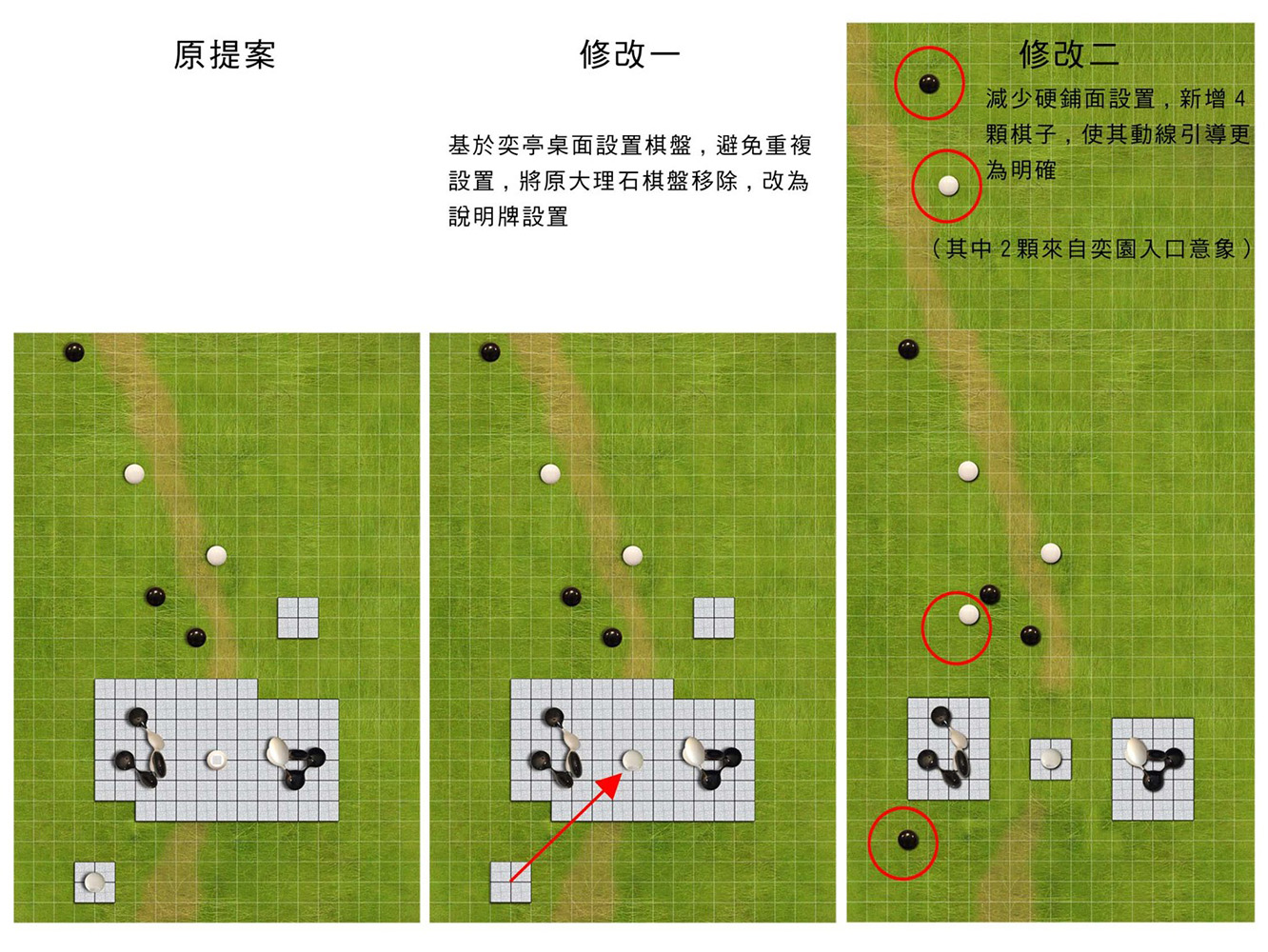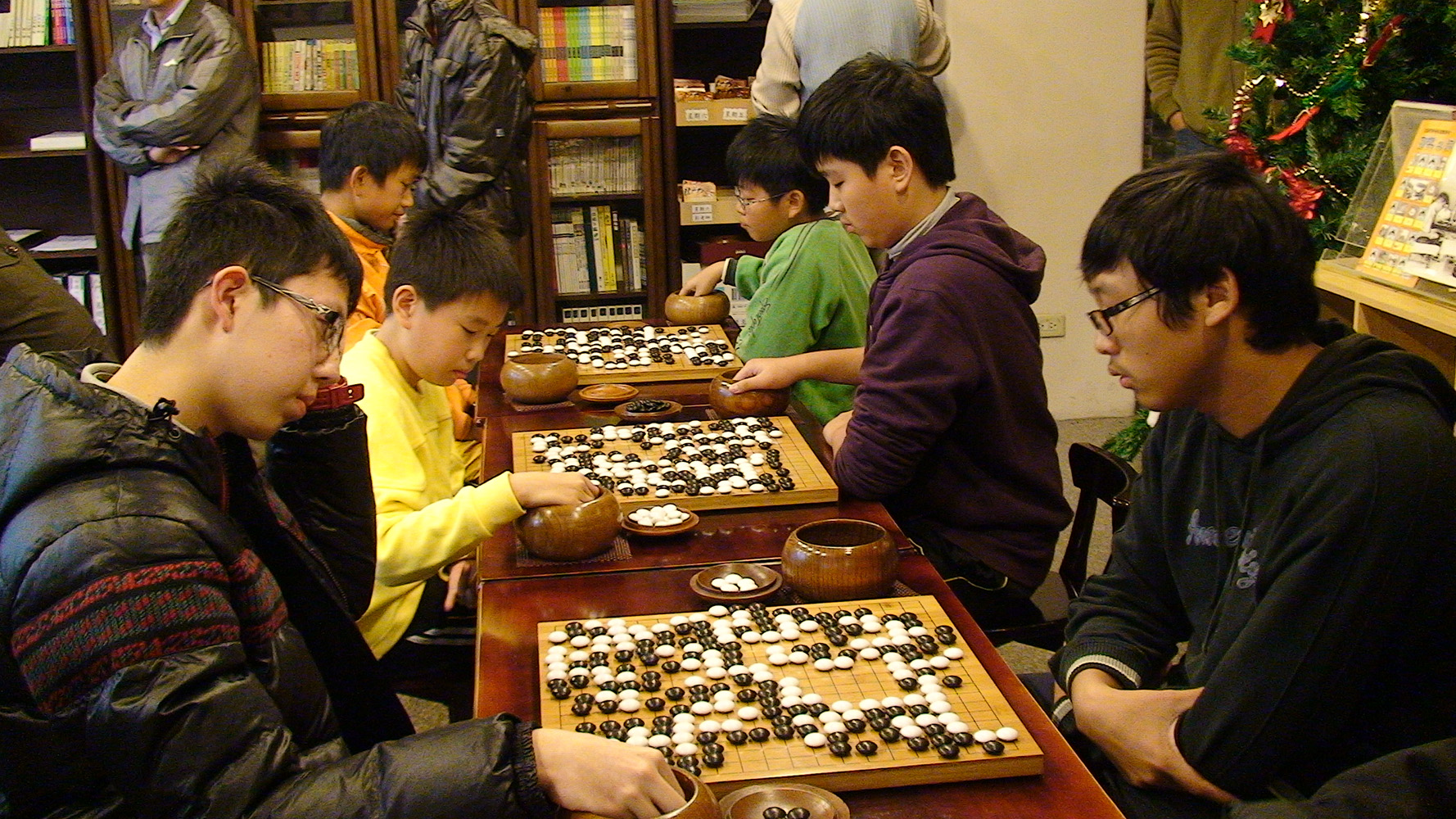大膽築夢,圍棋、藝術、生態的三方對局
In bold pursuit of a dream
按現今法令規定,公有建築物需投入一定比例的金額,來設置公共藝術作品,至於屬於私人捐贈建造的奕園,並無大型建築物,故採取一般工程標案即可,不在此限。
但藝術中心考量到奕園建置所需的專業度、安全性和完整性,仍決定將奕園從一般工程案轉型為公共藝術的概念,使得整體建設並非聚焦於建物本身,而更需要融合周遭生態環境與人文藝術,奕園因此成為了清華第一件由捐贈獲得,卻採用《公共藝術設置辦法》建構的建築空間,在台灣公共藝術計畫中也是極罕見而特殊的範例。
2012年6月,藝術中心展開比件徵選工作,受邀參加的規劃案,不乏出自藝文界知名人士之手,為求慎重,藝術中心特地於8月舉辦〈奕園公共藝術邀請比件展〉,吸引了許多師生、民眾參與,藝術中心亦製作問卷調查表,利用此機會彙整各方意見,以提供「『奕園』公共藝術設置計畫案徵選小組」參考。
由於對沈校長和此設置計畫關心的師生甚眾,因此參與徵選小組的委員多達11人,相較於一般公共藝術計畫的評選成員最多約7-9名,不難看出校方對此事的重視和期待。最後評選結果出爐,由藝術家楊尊智拔得頭籌,其規劃的公共藝術作品,於展覽期間亦是民眾票選最高票者。
儘管執行進度上一路馬不停蹄,和時間賽跑,但徵選小組對細節的要求依然一絲不苟,務求詳盡完善。在計3次的鑑價(評鑑)會議中,委員們仍積極與楊尊智共同討論,於原有素材和需求之上,再增加了石板圍棋十訣與九則、奕園緣起說明、奕亭圍棋對弈桌等項目,期盼奕園設置更加盡善盡美,使前來遊園的人士,可以「緬賢、賞棋、手談、習弈、休憩,使奕園成為多功能的圍棋聖地」。
雖然過去楊尊智已擁有多次公共藝術創作的經驗,2012年並榮獲文化部第三屆公共藝術獎「最佳創意表現獎」,論專業技術駕輕就熟,但因深知奕園興建託付了沈校長對清華園深厚的情感,故投注之心力更甚以往,曾表示對此次創作「與平常有不太一樣的責任」。
2012年12月至2013年5月,奕園相關工程陸續啟動、完成,6月1日舉辦揭幕典禮,位於南校區原始生態區中的奕園,以清新的面貌,正式向世人展露它獨特的風采。
In bold pursuit of a dream
The relevant laws and regulations in Taiwan stipulate that a certain proportion of the construction costs of a public building needs to be spent on public art work, but this didn’t apply to the Go Garden, since it was funded by a private donation and didn’t include a large-scale building.
Thus, in consideration of the particular requirements of the Go Garden, the Art Center decided to carry out the project as a work of public art integrating Go culture and ecology, in accordance with the Regulations Governing the Installation of Public Artwork.
In June 2012 the Art Center launched a design competition for the Go Garden, and the short-listed designs were put on display in August; visitors to the exhibition were asked to fill out a questionnaire soliciting their feedback for reference by the 11-member design committee.
The committee selected the design submitted by Tsun-chih Yang, whose entry also received the most votes from visitors to the exhibition.
In light of Shen’s failing health, the committee was aware of the importance of having the Go Garden completed as soon as possible, but still made a meticulous effort to ensure that everything was done properly. Thus three evaluation meetings were held with Yang to discuss the project, during which it was decided to augment his original design with paving slabs inscribed with “the ten commandments of Go,” wooden plaques inscribed with the “nine principles of Go,” a Go board in the Go Pavilion, and a plaque presenting the origins of the Go Garden, thereby making the Garden that allow visitors to absorb in Go playing and to reminisce President Shen while relaxing in the garden.
Yang had previously completed several pieces of public art, and in 2012 he was awarded the Ministry of Culture’s Public Art Award, and was thus considered highly accomplished, yet the design committee made it a point to stress that this project had to be carried out with meticulous attention to every detail, so as to meet Shen’s expectations.
The actual construction began in December 2012 and the Go Garden was officially opened on June 1, 2013, providing an ideal place for playing Go in a quiet natural setting on the south side of campus.




